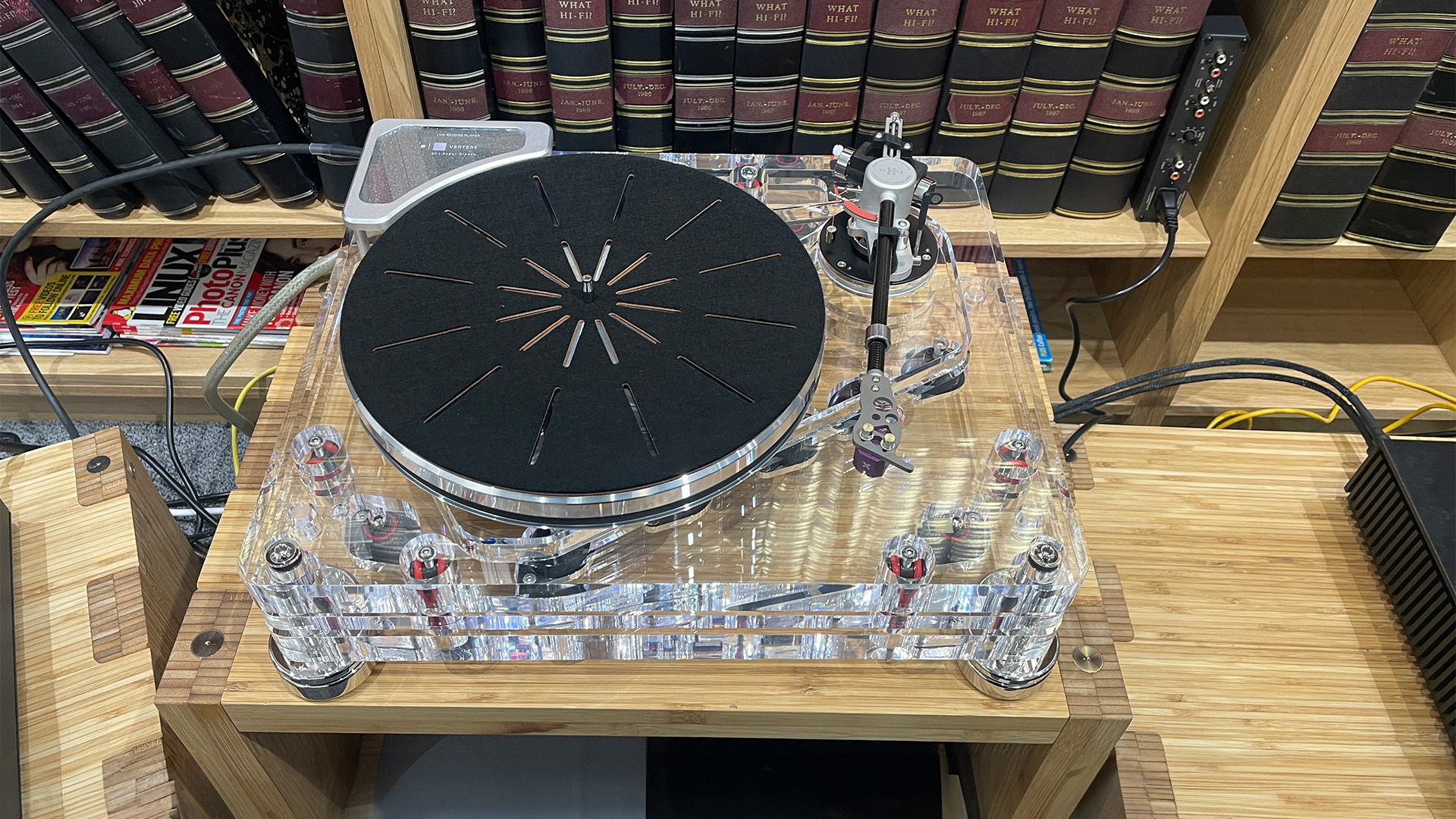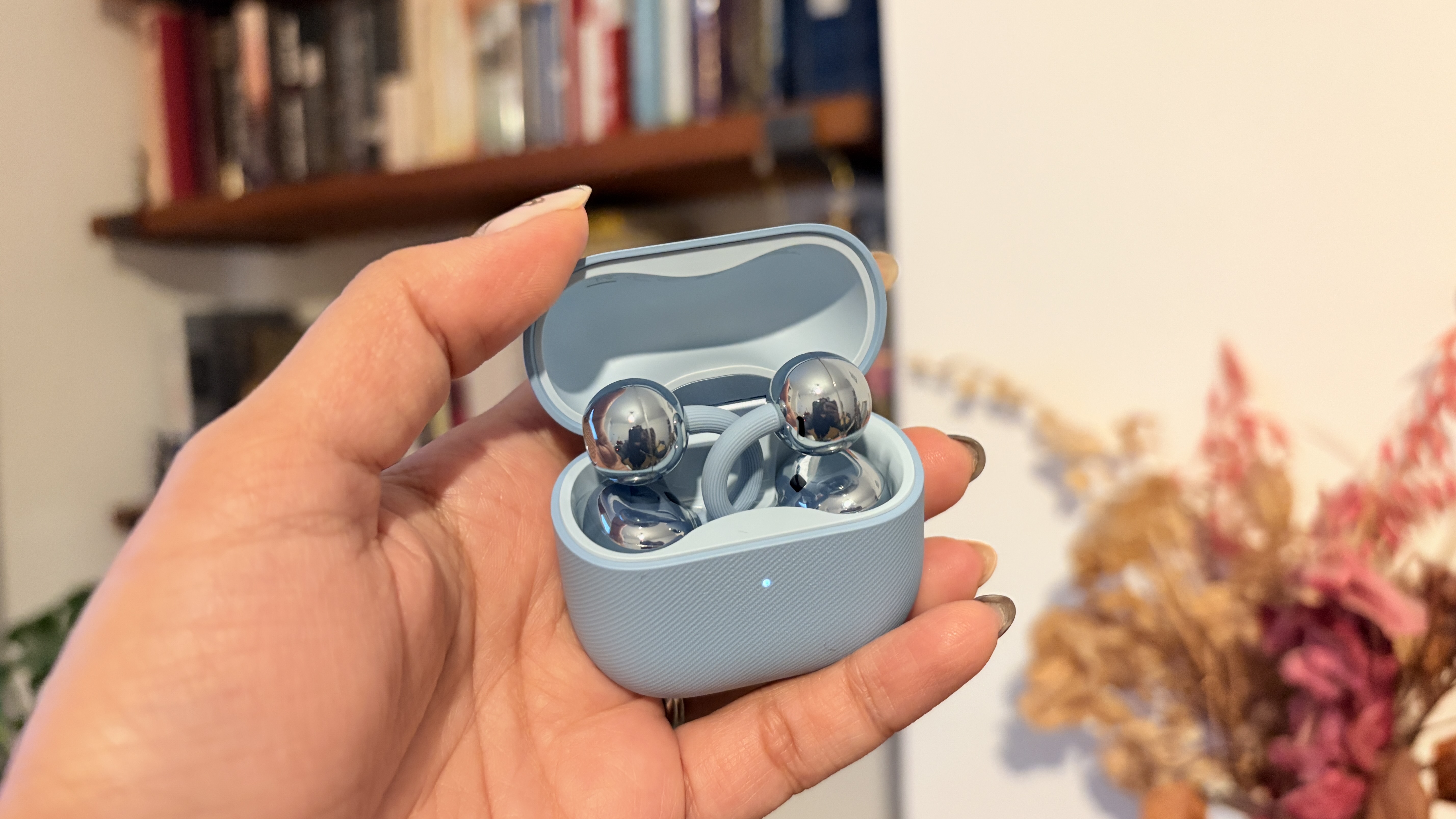What Hi-Fi? Verdict
The Vertere SG-1/XtraX turntable’s price puts it beyond the means of most, but its performance is truly astonishing in an appropriate system
Pros
- +
Exceptional sonic transparency
- +
Class-leading resolution
- +
Superb dynamics and rhythmic drive
- +
Lovely build and innovative engineering
Cons
- -
Price puts it beyond the means of most
- -
Some may find the appearance a bit showy
Why you can trust What Hi-Fi?
Hundreds of high-end products have passed through What Hi-Fi?’s test rooms over the years. Given the hefty prices involved, it will come as no surprise to find that the vast majority have been well-made and elaborately engineered. Most look imposing, some even manage to look luxurious, but we can’t recall a single one that we would call pretty.
Beauty is in the eye of the beholder and all that, but in dimly-lit surroundings, the Vertere SG-1’s strategically placed LEDs embedded in the sumptuous acrylic plinth is a lovely sight. 'Pretty' seems the best word for it, though you can always turn off the illuminations if you don’t like them.
Now, let’s not take this too far. Any record player that costs the same as a typical electric car needs more than good looks to justify the outlay. Fortunately for this Vertere Acoustics package, the foundations look rock solid. Its designer (and company founder), Tourag Moghaddam, has been in the turntable game for 40 years, and all that experience shines through in the engineering and design of this turntable package.
Our review package consists of the SG-1 turntable with Imperium motor drive (£25,305 / $34,395 / AU$51,890), the Pathfinder tonearm (£13,500 / $17,999 / AU$27,995) and the XtraX moving coil cartridge (£5800 / $6499 / AU$12,995). It was supplied with Vertere’s top-end HB mains cable, which costs a rather hefty (£2950 / around $3835 / AU$4795) on its own.
Design & engineering
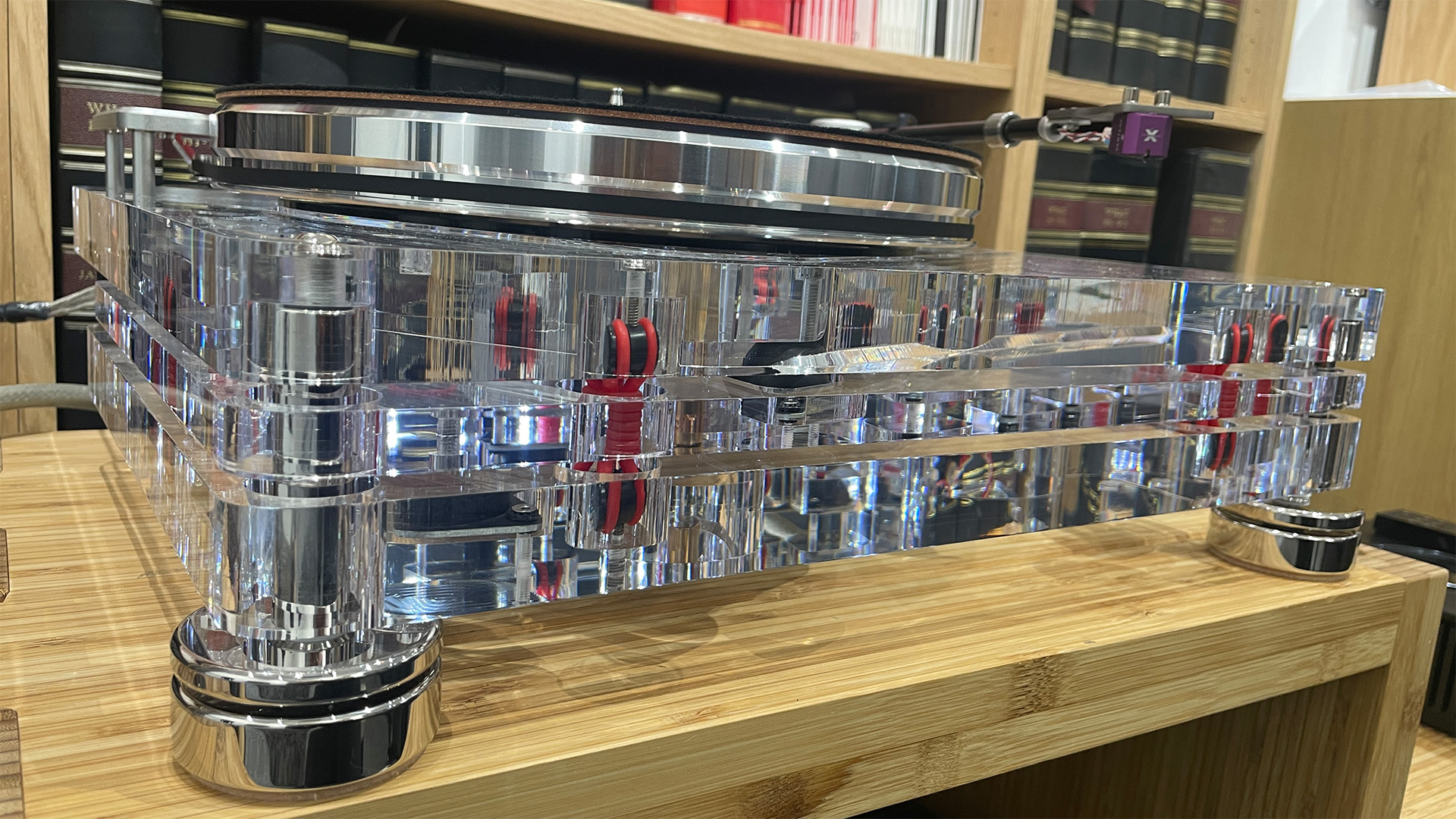
The Vertere SG-1 has a layered construction, with each level made from high-grade CNC-machined cast acrylic, a material chosen for its rigidity and low-resonance properties.
The top and bottom layers are 30mm thick with the central section being thinner at 15mm. These layers are isolated from one another (and the outside world) through a series of specially tuned rubber supports. The idea is to minimise the amount of unwanted vibrations that reach the stylus/record interface and give it the most stable platform possible.
This unusual and sophisticated design proves highly effective, offering plenty of isolation without suffering from the slightly unsettling bounce and wayward movement most sprung sub-chassis alternatives suffer from.
The latest hi-fi, home cinema and tech news, reviews, buying advice and deals, direct to your inbox.
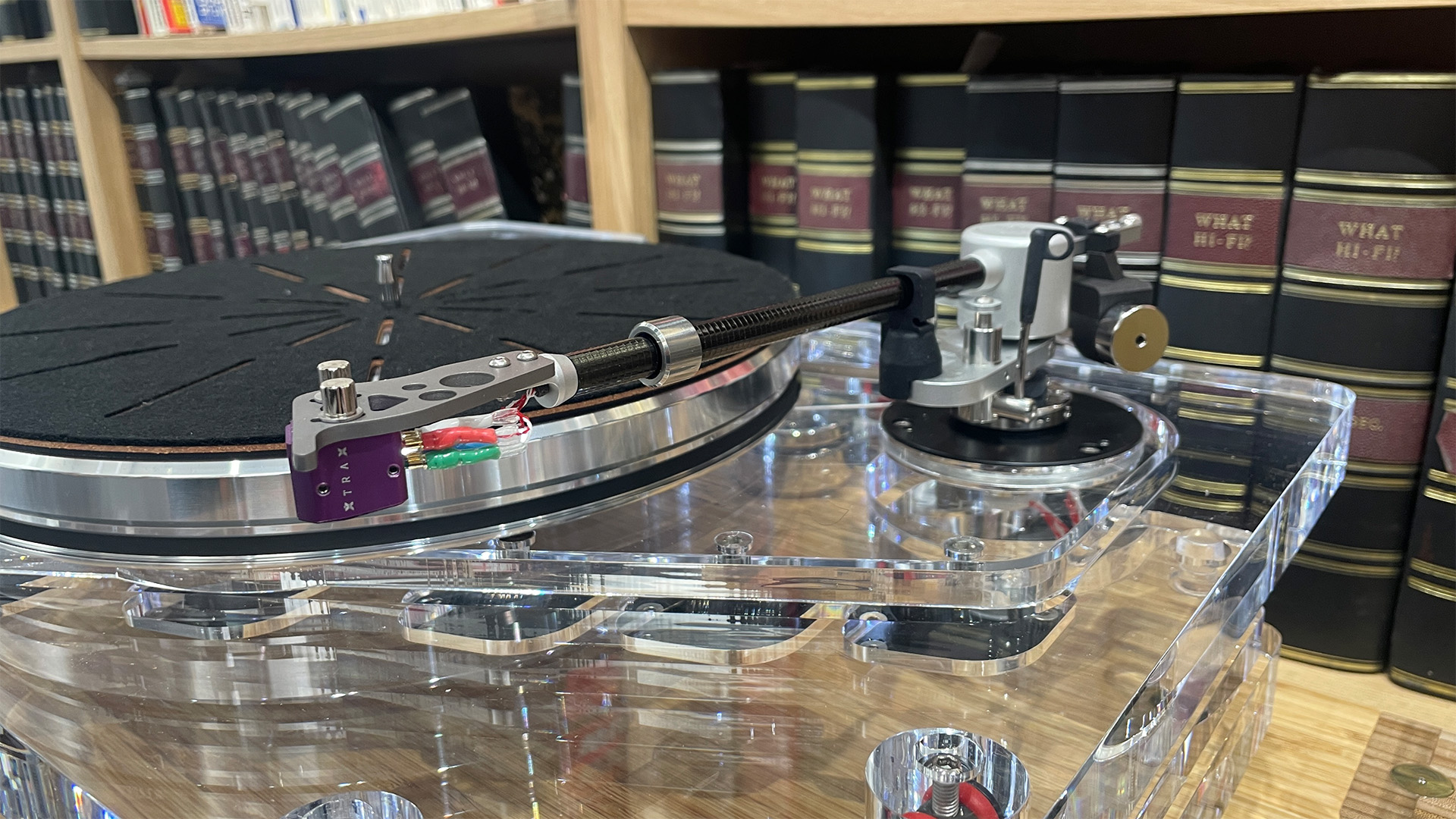
At the core of every turntable is its main bearing. The SG-1’s is an impressive piece of high-precision engineering. It combines an aerospace-grade phosphor bronze housing with a precision-hardened stainless steel spindle that sits on a tungsten carbide bearing ball.
The tolerances are exceptionally tight, with five microns (thousandth of a millimetre) for the housing, two microns for the concentricity of the spindle and just one micron for the roundness of the bearing ball.
If you ever get a chance to play with one off the deck, it is a thing of beauty (if you appreciate top-class engineering) – such is the impressive smoothness and lack of unwanted play as it spins.
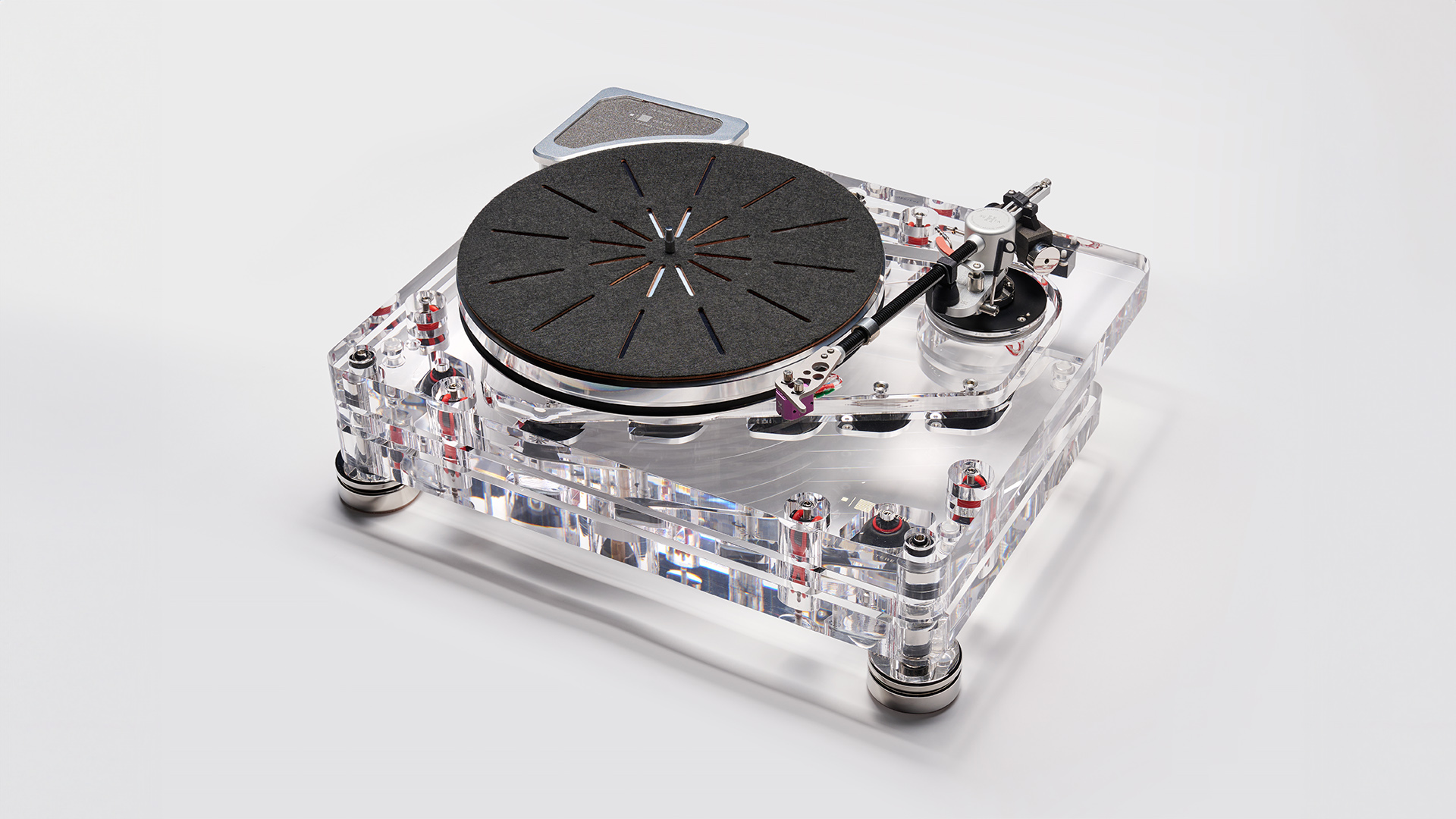
Cartridge Vertere XtraX moving coil
Phono stage? No
Bluetooth? No
USB? No
Dimensions (hwd) 22.5 x 49 x 44cm
Weight 18.5 kg
Finishes x 4 (clear, champagne, pearlescent white, metallic black)
The assembly is completed by a beautifully machined aluminium platter that’s topped off with a 3mm acrylic layer. This smooth acrylic disc is bonded to the platter. It is possible to put a record straight on it, though using the supplied Techno Mat, which is a mix of a fibre layer with a soft cork/polymer base, works better.
Unusually, the central bearing spindle has a removable top. This should be left in place to centralise the record and then removed to ensure that there is no direct contact between the vinyl and the main bearing. This arrangement ensures that any bearing noise, as low as it is likely to be, doesn’t find a direct path into the record itself. We tried it both ways, and there is a slight but clear sonic benefit to removing the top.
Even the drive system bucks convention. At its heart is a 24-pole Swiss-made synchronous motor that is mounted so that it can move to balance out any unwanted tension in the drive belt. Doing this helps speed stability.
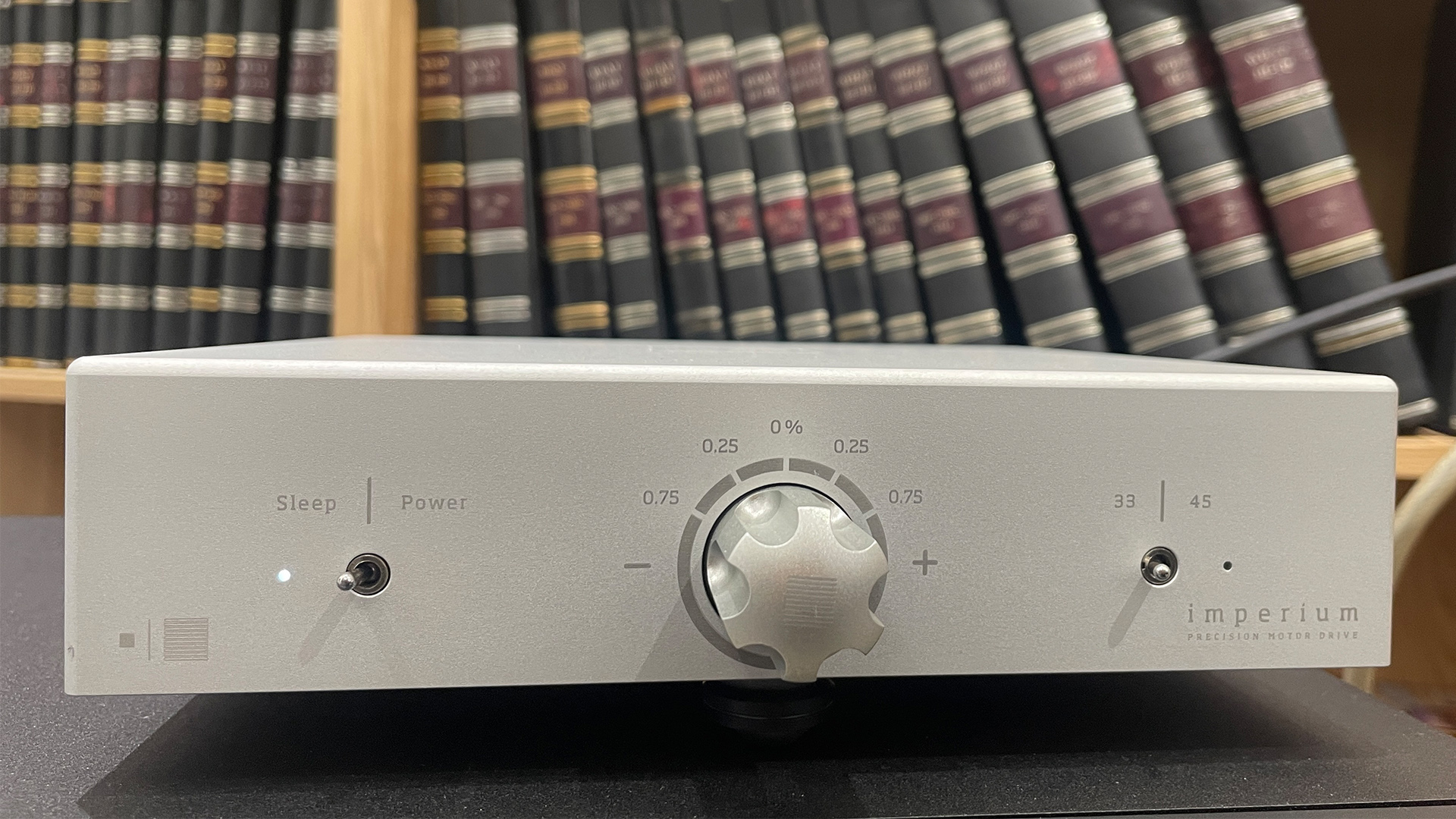
Our SG-1 review sample came with an upgrade power supply (or Motor Drive as Vertere likes to call it). At £9250 / $11,995 / AU$18,995 on its own, the Imperium Precision Motor Drive is a pricey proposition, but having heard the improvements over the standard unit (the Tempo) it would be hard to resist tapping the card for this one. It also allows subtle adjustments to the set speeds, to compensate for poorly made records.
What does the Imperium do? Simply put, it supplies the motor with a purer signal, which allows it to spin more smoothly and vibrate less, and only good sonic things can come of that.
The Pathfinder tonearm is an unconventional design too. Initially, it looks like it has a standard unipivot bearing (though it could be argued that unipivots are hardly standard in the first place) but here the tungsten carbide pivot point is centred by a trio of precision silicon nitride balls, so avoiding any slight degree of ‘skating’ a traditional unipivot arrangement suffers from.
That ‘skating’ may only be a matter of microns, but considering just how small the information in a record groove is, every little extra bit of precision in the location of the bearing matters.
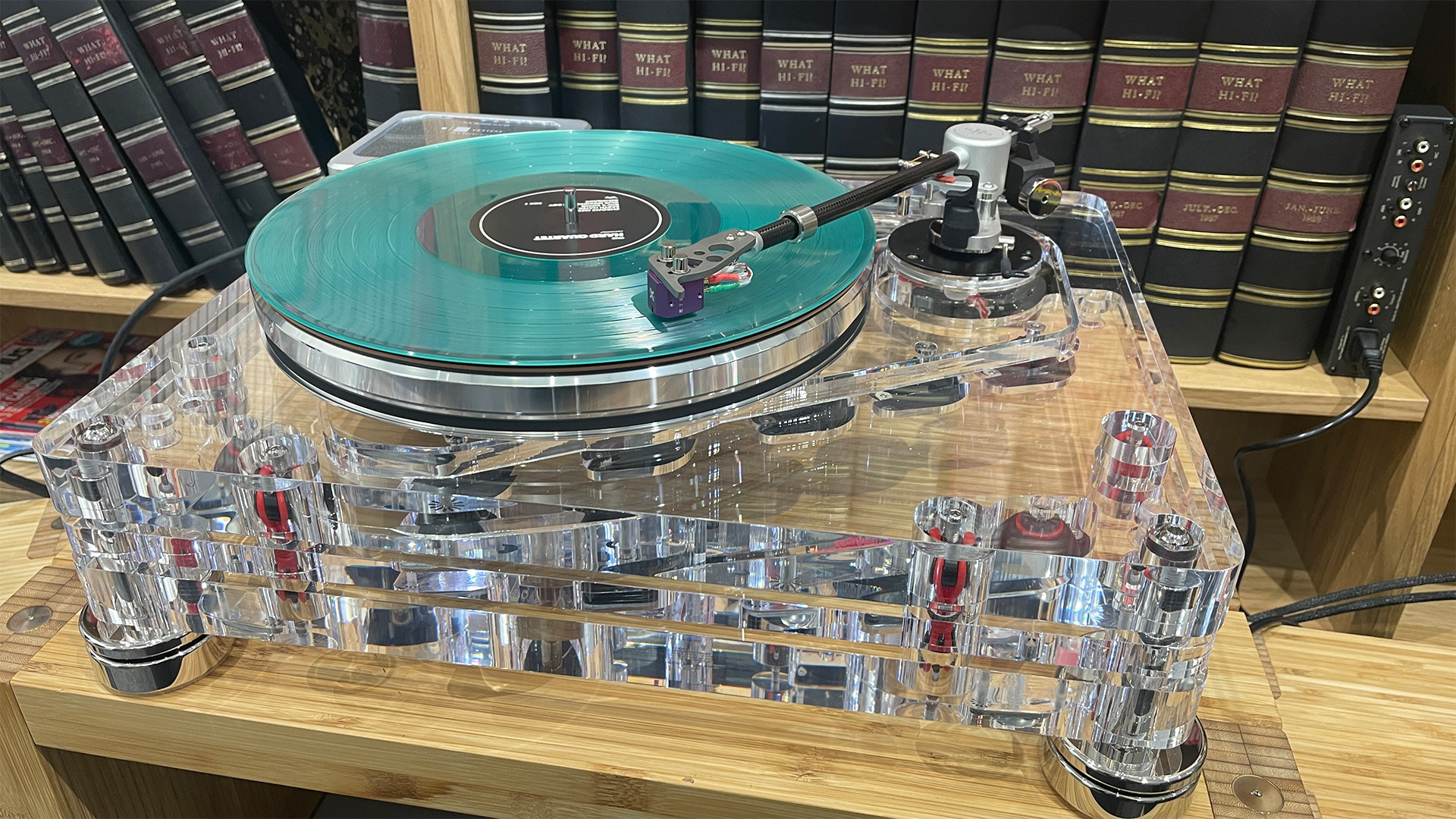
Both the pivot point and counterweight are positioned as low as possible, with the result that the Pathfinder tonearm feels way more stable to handle than other unipivot designs we have tried. Its arm tube is made of roll-wrapped carbon fibre for the combination of rigidity and resonance behaviour the arrangement offers, and there is a small, decoupled weight that can be moved along the arm to fine-tune tracking force and allow optimisation for differing cartridge suspension compliances. It’s a clever touch that allows the arm to get the most from a wider range of partnering cartridges.
Of course, there is a high chance that most SG-1 turntable packages would include one of Vertere’s in-house cartridges. Here we have the XtraX moving coil, the company’s current range-topper, and arguably the most conventional part of the package. It uses a single-piece aluminium housing where the generator is held with a rigid four-point arrangement.
The XtraX’s nude micro elliptical stylus is profiled from solid diamond and fitted to a telescopic aluminium cantilever for improved control. In output terms it isn’t anything unusual at 0.45mV (@5cm/sec), so should work with any decently designed moving coil phono stage as long as it can accommodate the 850-1500 ohm resistance and 0-470pF loading requirements. The XtraX tracks securely at the recommended 2.05g.
Sound
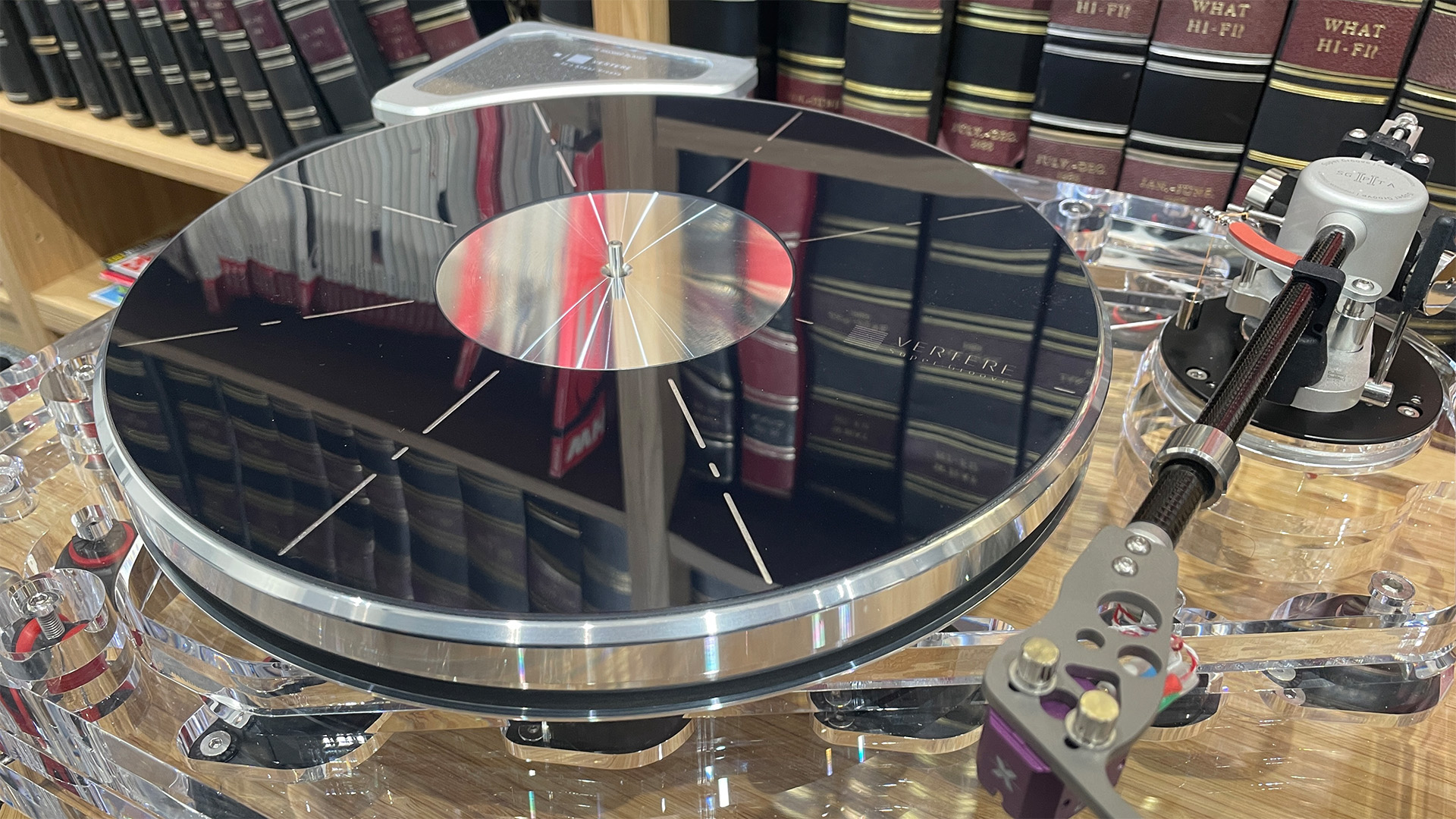
Any record player at this level positively demands a top-class partnering system. We partner the SG-1/XtraX package with our usual reference Burmester 088/911 MkIII amplifier and ATC SCM50 speakers. The Burmester 088 has the optional moving coil phono stage module fitted, and we also have other options such as the Cyrus Phono Signature/PSX-R 2 phono stage and Vertere’s own Calon on hand.
At this point in a review, we would normally focus on the mechanics of the Vertere SG-1 package’s sound. We would drill into the minutiae and talk about specifics, but that doesn’t seem right with this record player. Its sound is so natural and cohesive that trying to take it apart doesn’t make sense.
When we play Beethoven’s 5th Symphony, it’s not the exceptional detail resolution or convincing tonality that grabs our attention but the sheer musical drama of the piece. We are swept away by the energy of the orchestra’s performance and thrilled with the dramatic dynamic shifts of the music. Instruments come through with a naturalness that we have rarely heard in any high-end record player, and the way this Vertere delivers such a wealth of fine detail without distracting from the musical event is deeply admirable.
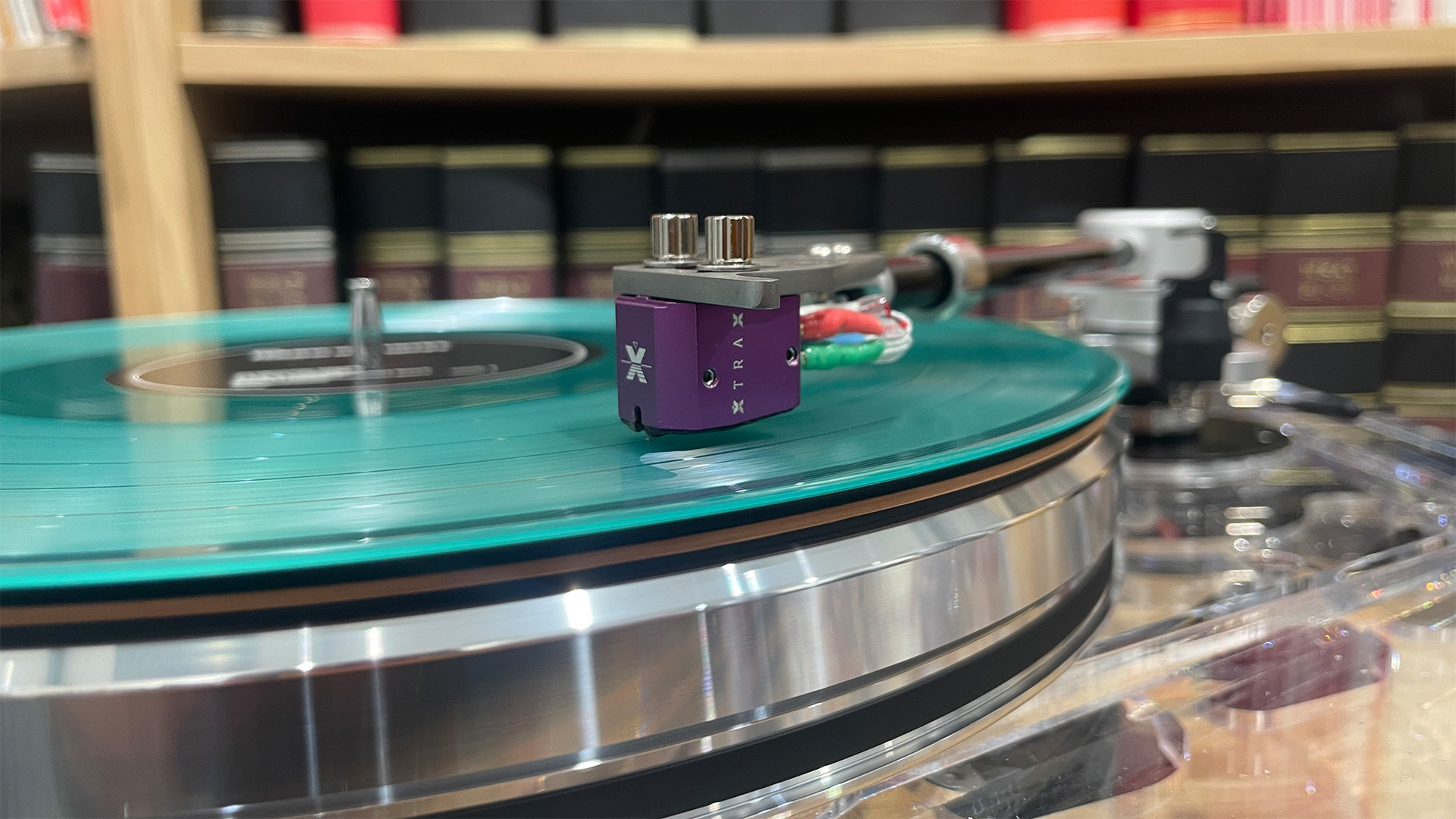
The SG-1 package’s performance is about control and composure partnered with a wonderful lack of restraint. It preserves the music’s energy, delivering the might of an orchestra in full flow without sounding rough at the edges. Sure, if you want to concentrate on the specifics, the Vertere is happy to oblige. It delivers a wonderfully expansive, three-dimensional soundstage where instruments are locked into position and layered in an utterly convincing fashion.
The sense of scale is impressive, as is the organisation when the music becomes demanding. The record player doesn’t get fazed or ruffled, no matter how demanding the source material gets.
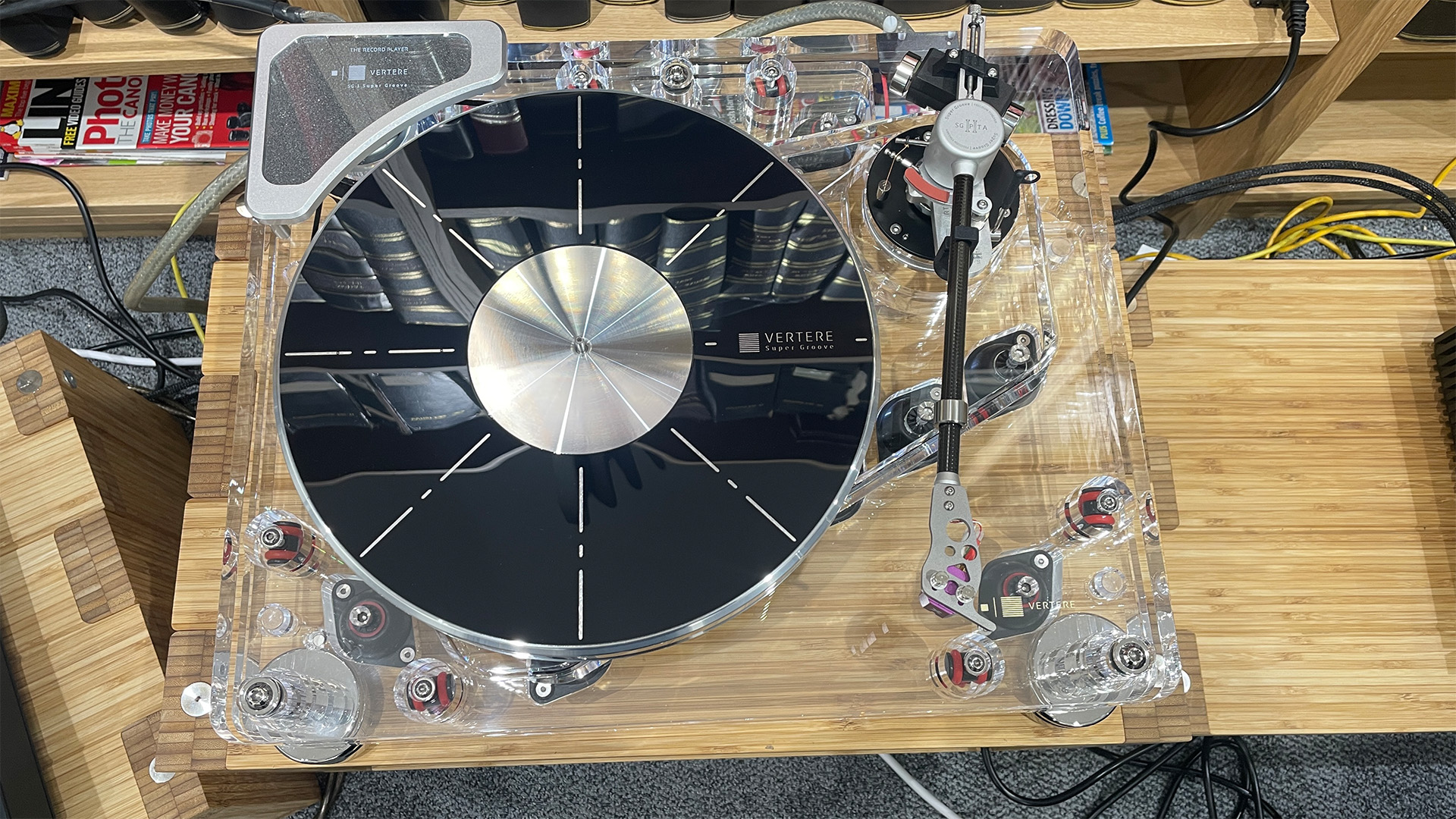
Switching to Michael Jackson’s Bad proves that the Vertere knows how to have fun too. Given a song like The Way You Make Me Feel, the record player’s handling of rhythmic drive is superb. It tracks changes of momentum with ease, communicating the joyful feel of the song better than any rival we’ve heard.
The tonality of a record player mostly comes down to the cartridge and the XtraX moving coil delivers a balanced and even presentation. Jackson’s voice sounds natural and expressive, avoiding the thin harshness we often hear. His various vocal ticks come through with clarity no matter how dense the instrumental backdrop.
Elsewhere, it is hard not to be taken by the power and articulation of the bass and the powerful way the Vertere punches out hard-hitting transients without sounding overly musclebound. Unless that’s what the music needs, of course, in which case it duly obliges.
Verdict
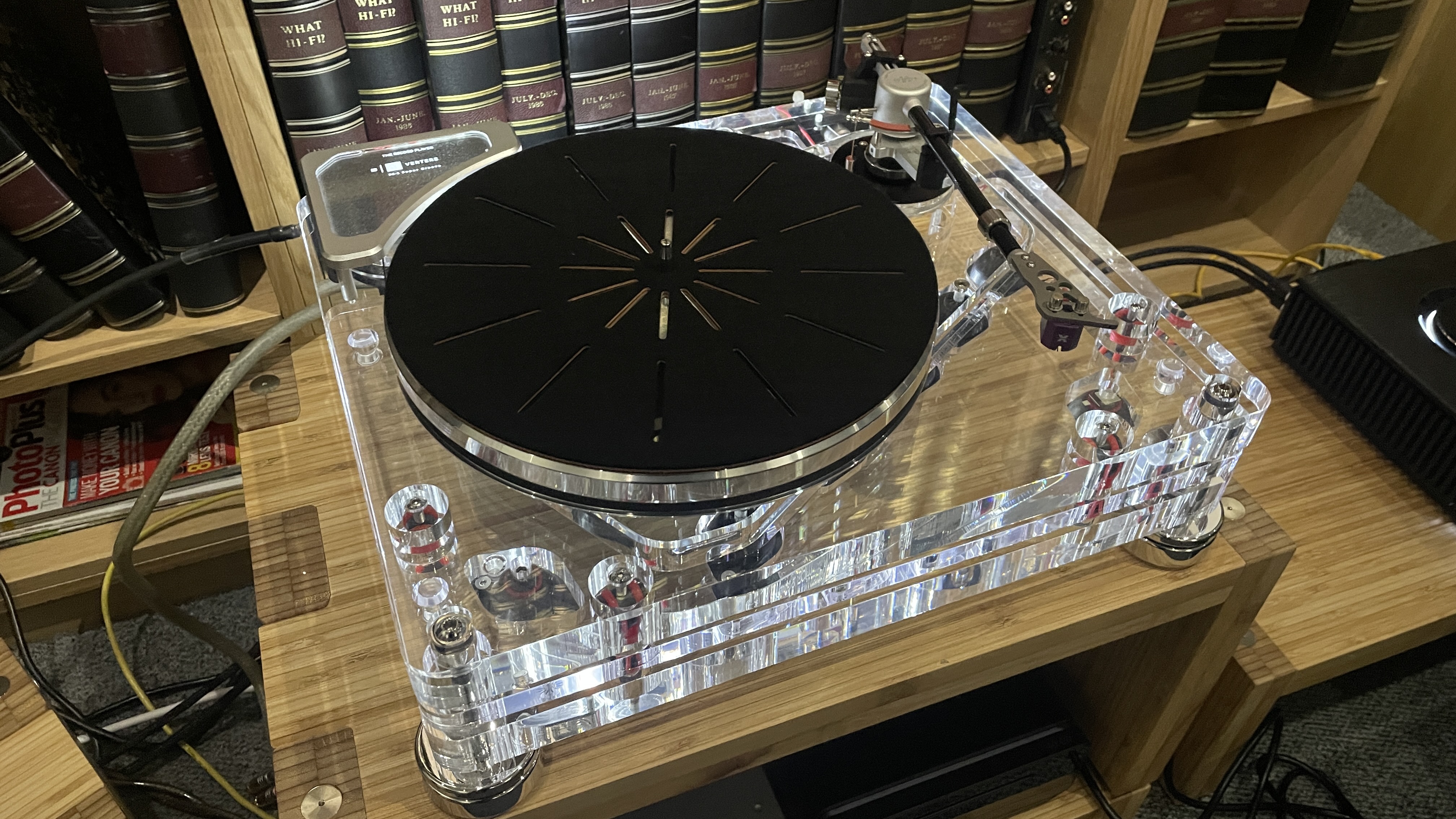
The SG-1 package is a true musical chameleon, one that changes character with the recording being played. This is something that only happens when a record player has a high degree of transparency and refuses to stamp its own sonic fingerprint on the sound of the disc being played.
Such a talent is rare in hi-fi, and should be cherished.
It never comes cheaply either, as the Vertere SG-1/XtraX package’s premium price proves. While our credit limit stops far below the amount needed to own this extraordinary record-playing package, we are so glad it exists.
Review published: 7th April 2025
SCORES
- Sound 5
- Build 5
- Features 5
MORE:
Read our review of the SME Model 60
Also consider the Linn LP12 Klimax
Read our Vertere MG-1 review
Best turntables: top record players tested by our expert reviewers

Ketan Bharadia is the Technical Editor of What Hi-Fi? He has been reviewing hi-fi, TV and home cinema equipment for almost three decades and has covered thousands of products over that time. Ketan works across the What Hi-Fi? brand including the website and magazine. His background is based in electronic and mechanical engineering.
- Kashfia KabirHi-Fi and Audio Editor
You must confirm your public display name before commenting
Please logout and then login again, you will then be prompted to enter your display name.
